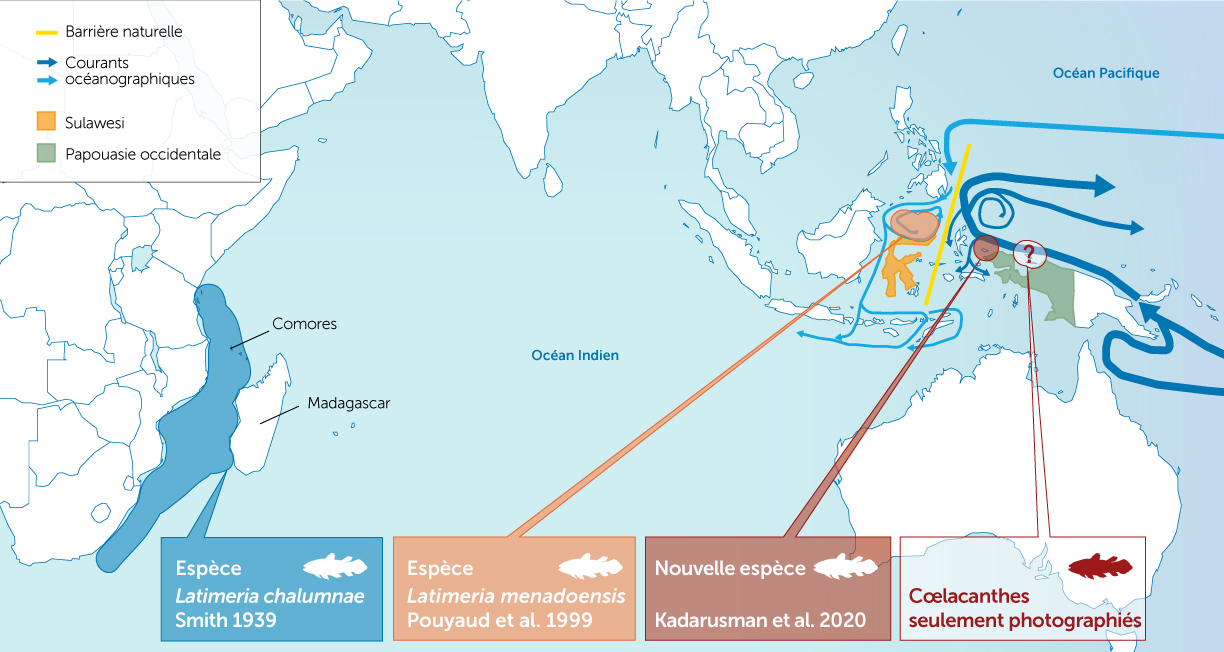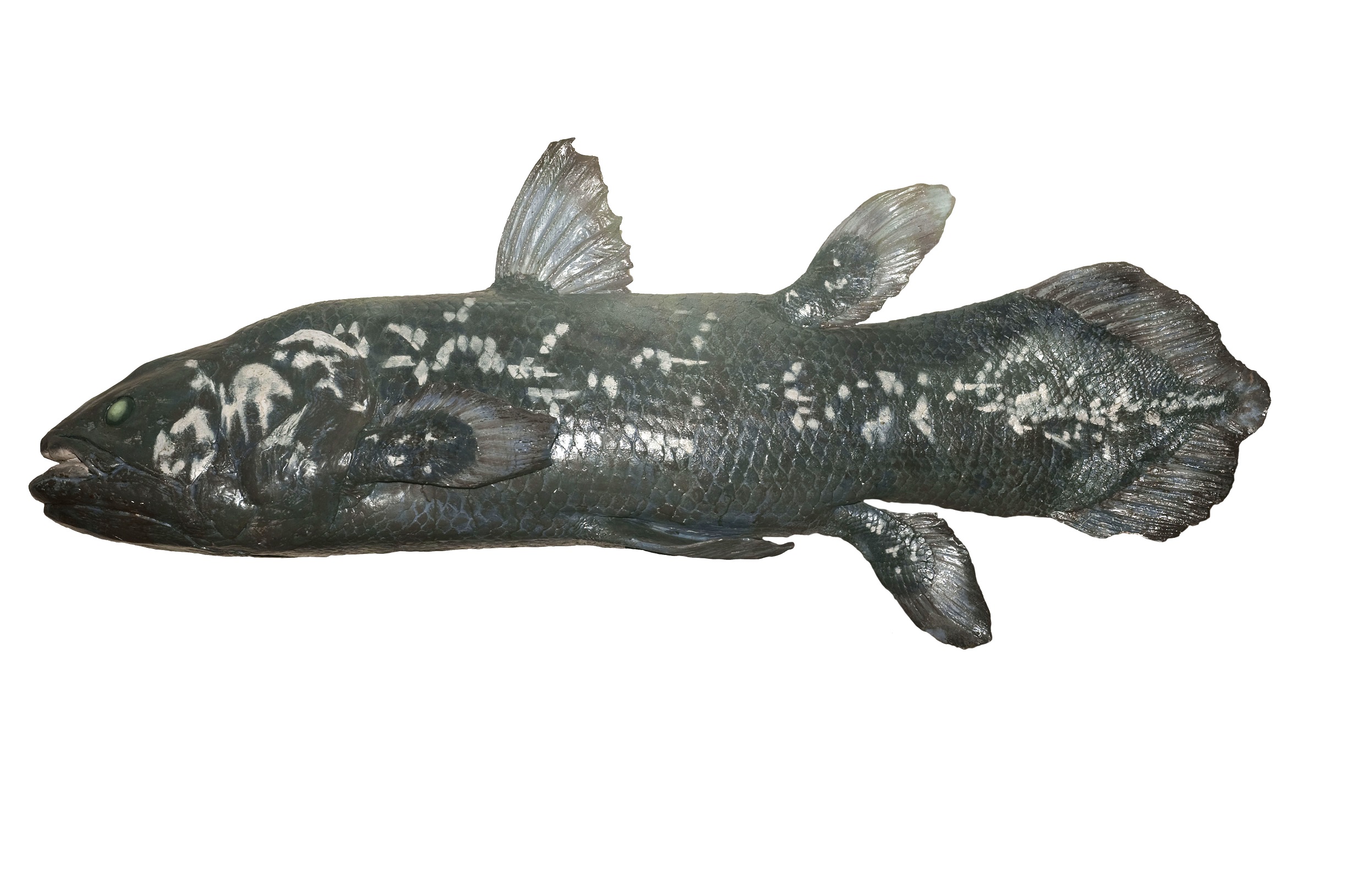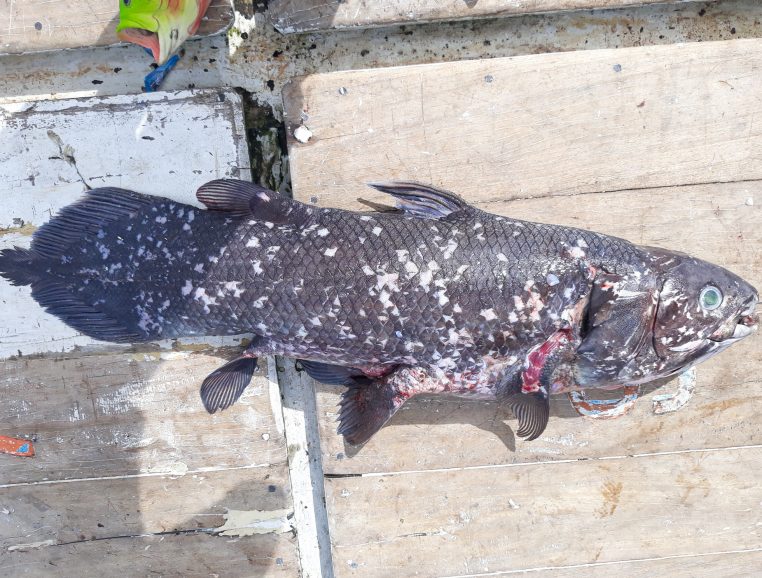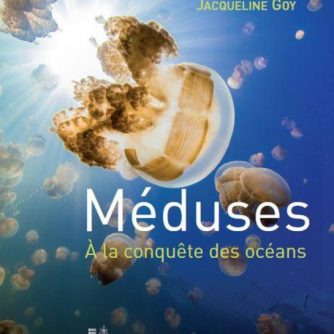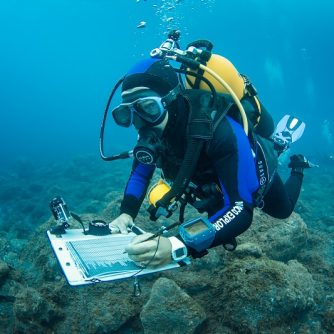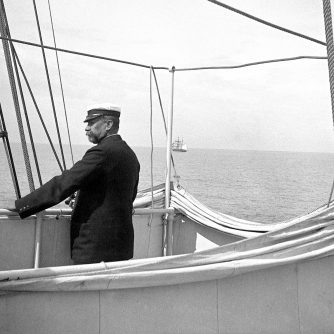The coelacanth
a growing family?
- Home
- Intervenants-FDM
- The Coelacanth family is growing ?
A 3rd species of coelacanth probably discovered in Papua!
News based on an article by Olivier Blot, published on the IRD’s Le Mag website. Read the full article here.
A photo of a coelacanth caught by chance by a sport fisherman in 2018 750 km east of Sulawesi off West Papua alerted scientists, including Régis Hocdé of the Franco-Indonesian team at the Institut de Recherche pour le Développement (IRD), who was involved in researching this specimen, and who regularly collaborates with Monaco Explorations.
"We have long felt that the discovery of a specimen in eastern Indonesia, particularly in West Papua, would indicate the existence of a new species, distinct from the one already known on the coasts of Sulawesi. This is indeed the case, but in addition the genetic study of this specimen sheds light on the evolution of this group of fishes from the depths of time, survivors of a lineage of aquatic vertebrates that is itself at the origin of all terrestrial vertebrates.
Régis HOCDE
Océanographe à l'IRD
A scientific event!
Only two contemporary species of coelacanths – a group long thought to be extinct – have been discovered and characterized so far, thefirst along the coast of Africa in 1938, thesecond in Manado, Sulawesi in eastern Indonesia in 1999.
Discovering athird species would be a real scientific event. This discovery is a bit of a miracle, as the author of the catch had already eaten part of this fish that he did not know before the scientists were alerted by the images circulating on the net! Fortunately, there was enough biological material left over to conduct the molecular analysis and initiate the genetic study of this coelocanth. The study of one or more whole specimens will be necessary to complete the genetic characterization by a morphological description, made impossible this time because the fish was consumed, an essential prerequisite for the officialization of this “perhaps”3rd species and its denomination.
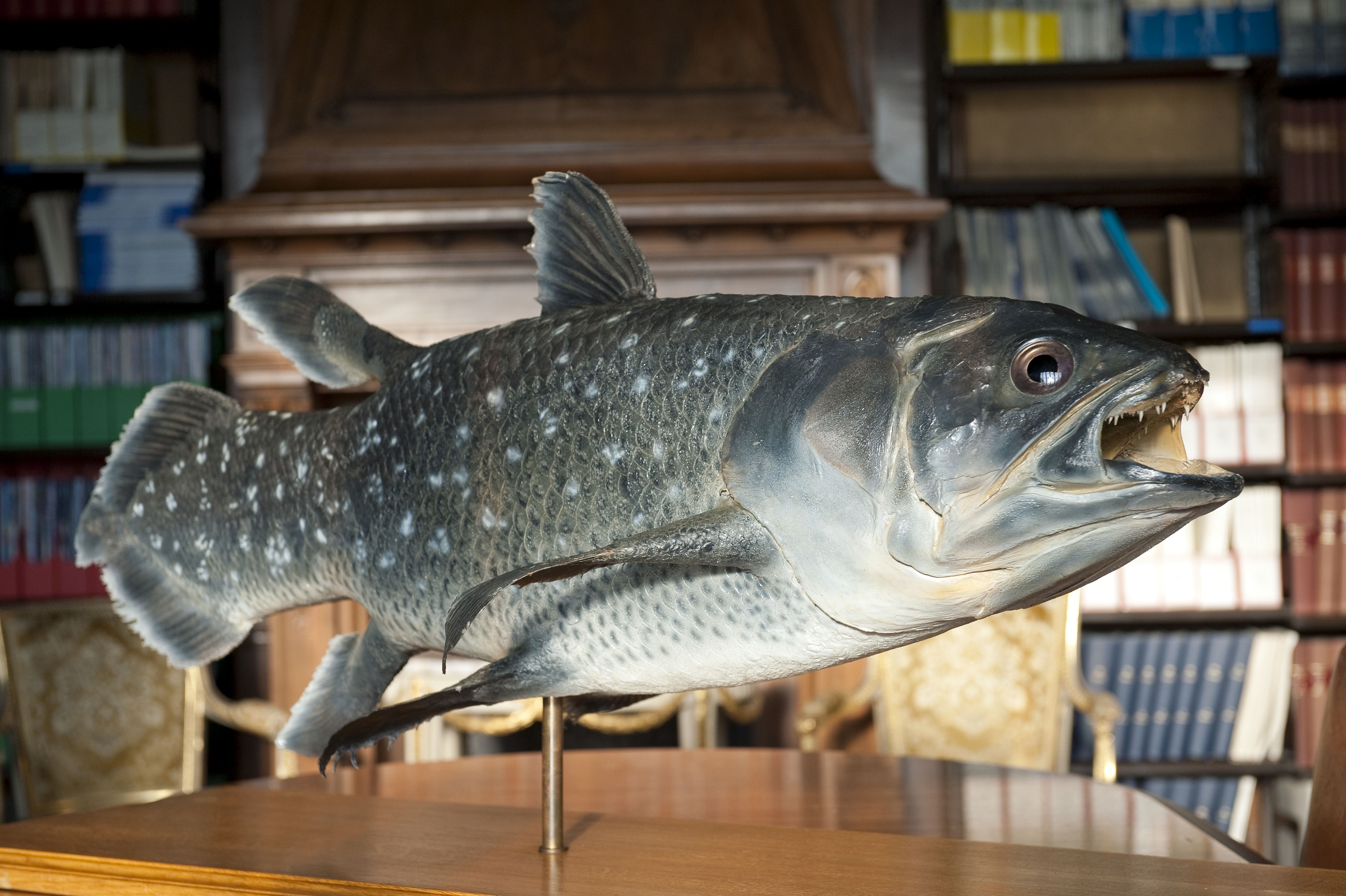
WORD OF EXPERT
Michèle Bruni, Exhibition Manager and Head of the Scientific Collections of the Oceanographic Institute
There is no living coelacanth in the Aquarium, but a coelacanth can be seen at the Oceanographic Museum in the Cabinet of Curiosity of the artist Marc Dion, on the first floor. It is a life-size cast of an 80 kg specimen caught in 1955 in Anjouan, Comoros, acquired in 1976 from the Natural History Museum. Also on display on the first floor is a rare fossil of a species that lived in the Cretaceous period 110 million years ago. Coelacanths were much more numerous and diverse in ancient times. Abundant in the primary era, they survived the extinction of the end of the Permian, about 245 million years ago. In 2010, when examining the piece, specialists from the Natural History Museum found that the lump visible ventrally, which could pass for an "egg", was in fact an ossified lung! Coelacanths were the only animals to possess this organ allowing air breathing in addition to the breathing done thanks to the gills because the fresh water where they lived, was poor in oxygen. Today's coelacanths remain in deep marine waters, so they no longer breathe air and use their gills.
